Disclosure: We may earn money or products from the companies mentioned in this post.
Most kids dream of the day when they will get their first pet but pets are a big responsibility and as parents, we have to think about what’s best for the kid and their pet. That’s why my family has always thought that a pet rabbit makes a great first pet for a kid.
A pet rabbit is good for the child, good for the bunny, and easier for us as parents. It’s a win-win-win.
Bunnies are one of the best first pets for children. Rabbits are a lot quieter than dogs and cats, they don’t smell as bad as dogs, they don’t require as much space as a dog or cat, and they are not as mean as some cats.
In this article, we’re going to start with the basics you should consider when considering getting a rabbit as a child’s first pet. To be more specific, we’re going to lay out the pros and cons of getting a pet rabbit for your kid.
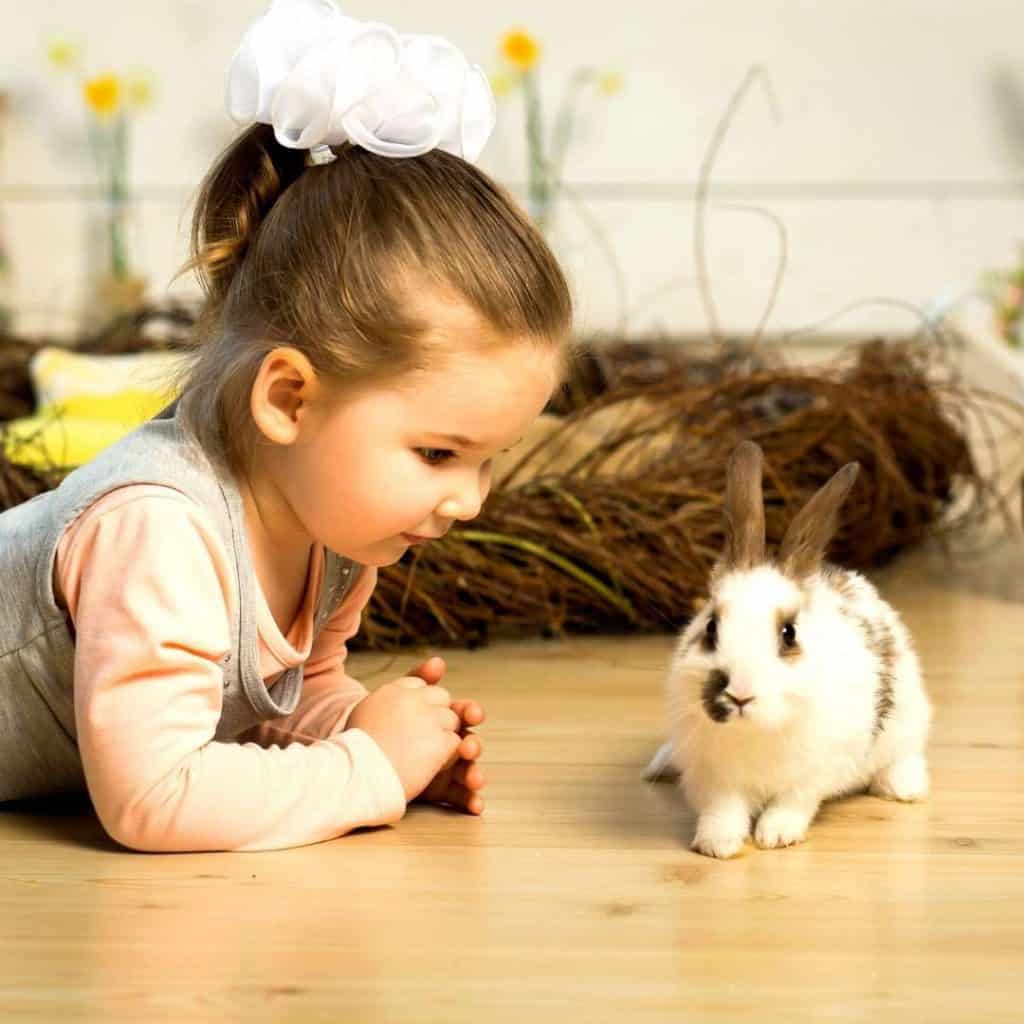
15 Reasons That Rabbits Are Good Pets For Kids
As adults, we know that having pets is good for our mental and physical health. Pets are known to reduce stress and it encourages us to be social and stay active.
But for kids, are there advantages to having pets?
Having a pet is good for a child’s mental and physical health, just like having a pet is good for adults. In addition, having a pet teaches children responsibility and empathy while encouraging curiosity and learning.
1. Rabbits Are Safe Sized
As long as you choose a medium-sized rabbit, a pet rabbit is just the right size to be a kid’s first pet.
A medium-sized rabbit isn’t so large that they are likely to seriously injure a child either by accident or by an act of aggression.
Likewise, a medium or larger-sized rabbit is big enough that a child is unlikely to accidentally hurt their first pet.
Thus, a pet rabbit is a perfect size to be a kid’s first pet.
2. Rabbits Are Not Overly Aggressive
Every rabbit has its own personality and every living thing’s personality is shaped by its past experiences, which means that rare rabbits can be very aggressive, even to the point of scratching, kicking, or biting their owners.
However, I want to stress that it is very rare to find an aggressive rabbit. Rabbits are naturally prey animals, not predators, which means they have no natural instinct to attack, and when threatened their instincts tell them to either run or hide.
3. Rabbits Are Not Particularly Dangerous.
Even when a pet rabbit does act aggressively out of fear or anger, rabbits are small herbivores and their ‘attacks’ are pretty harmless.
A pet rabbit can scratch a person, but bunny scratches are pretty mild. They can also kick, but the danger of the kick isn’t really a bruise or worse, but just a deeper scratch which is still pretty shallow.
Finally, a rabbit can bite and its teeth can be really sharp. However, it’s very rare that a rabbit bites a person hard enough to puncture the skin. They just don’t have the instinct to bite to really harm something or someone.
To be clear, some rabbits will chew on anything, including your clothing and fingertips if you let them. However, these are usually gentle nibbles that can cause damage over time, not dangerous chomps.
4. Don’t Take Up Much Space
Rabbits need space, but not nearly as much as a dog or cat. If you try to keep a dog or cat in one room of the house, you’re likely to end up with some damage.
Pet rabbits can mostly live in a rabbit hutch with regular time outside of their hutch to play and bond with the family and even that outside time can be limited to just a single room in the house.
Here is an article about setting up an indoor rabbit hutch.
5. Smaller Exercise Required
Note that I choose to say smaller exercise and not less exercise. Rabbits need exercise, but because they are small and timid, they don’t need as large of an area to get that exercise.
While some people do take their rabbits on a walk in the park, it’s not as required as it is with dogs.
Likewise, rabbits love to be played with just like cats do, but they’re not going to go as nuts for a laser pointer or a feather on the end of a fishing pole.
Exercise space for your kid’s first pet rabbit can be limited to a single room in the house that you’ve made rabbit-proof.
6. Teaches Responsibility
If there is a concept that most children are not familiar with it’s the feeling of having something/someone rely on them. Pets, however, to some extent help kids become familiar with the concept of responsibility.
All pets, including pet rabbits, need consistency and patience and thus, kids who are dedicated to their pet bunny are taught this concept early in life and are therefore better prepared in later life to care for others.
7. Teaches Empathy
At the same time having a pet bunny helps children become more empathetic and more compassionate to others.
This is because having a pet rabbit helps a child widen their perspective. Kids who are bonded strongly with their bunny will learn the value of friendship, loyalty, and companionship.
In a lot of ways, having a pet rabbit as a child helps kids think of others before themselves. And, since bunnies give so much love in return, kids learn the rewards of being kind and compassionate towards another being.
8. Provides Companionship
Pets require attention and love. Once these are provided, they reciprocate with unconditional love and companionship. Thus, having a pet rabbit can make your child significantly less lonely.
Sure siblings and friends could provide companionship and friendship but bunnies don’t quarrel with you and they’re always there to be silent yet loving companions.
Rabbits who share a strong bond with their owners are so adorable. Rabbits will learn to recognize their owners by sight, voice, and smell. With that bond, a pet rabbit will provide constant, unceasing, and quiet companionship for years to come.
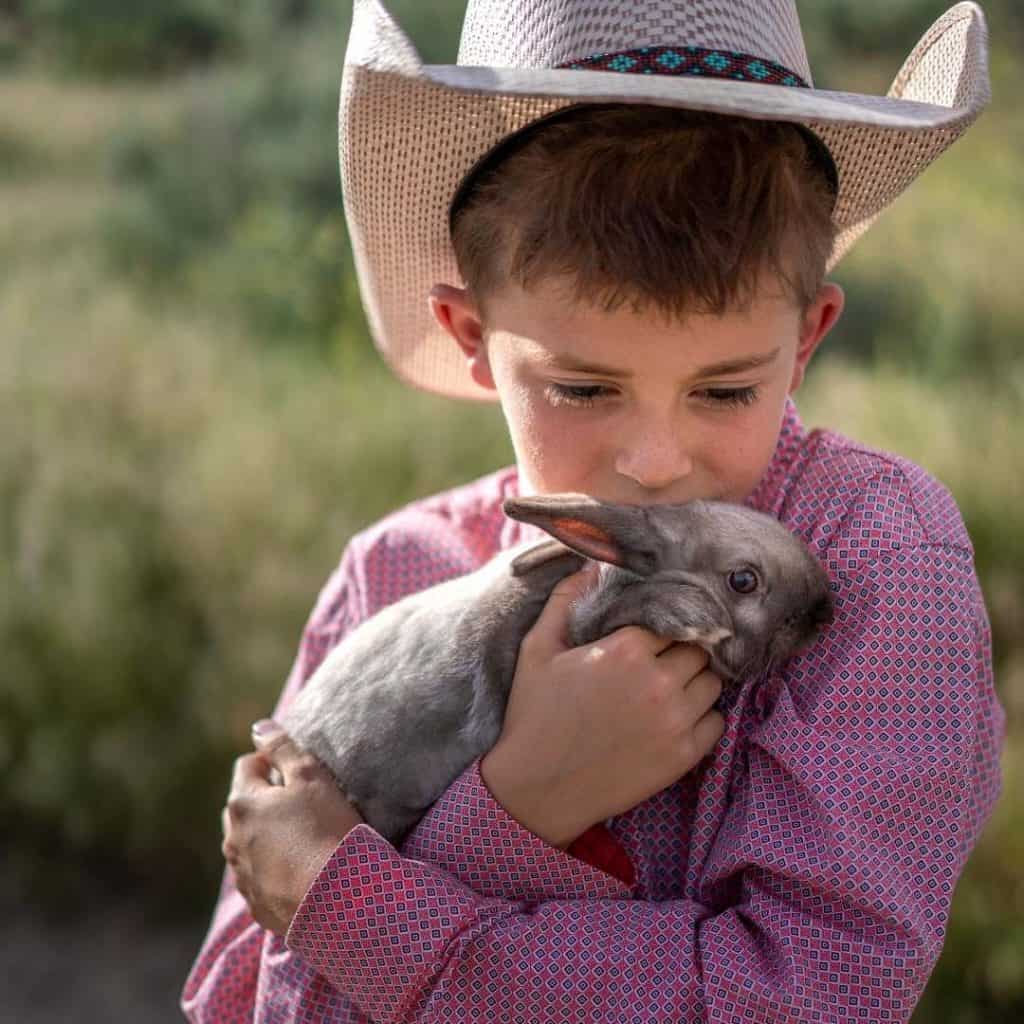
9. Rabbits Have Long Lives
Pet rabbits live much longer than a pet hamster or goldfish, and longer than many dogs. And while they don’t live as long as most cats, they will likely survive your kid’s childhood and save you from the painful experience of dealing with a lost pet at an early age.
Pet rabbits live an average of 7 to 12 years, though that varies by breed.
10. Rabbits Are Calming
You have probably learned that some pets are used for therapy. For example, we have therapy dogs in schools and hospitals because their presence is comforting to the kids and patients.
Why don’t you see therapy rabbits in schools and hospitals?
It’s not because they are not calming, it’s because they are timid prey animals who don’t like being in strange environments. However, in the comfort of their own safe space, they are just as comforting as a therapy dog, but without inspiring fear in some people.
Children who become the primary caregiver of a pet rabbit learn to embrace curiosity and self-directed learning.
11. Encourages Curiosity and Learning
In our home, we’ve always strived to nurture our children’s curiosity and encourage self-directed learning. Because pet rabbits are not as common as pet dogs or cats, when your child gets a pet bunny they will likely become the subject matter expert in your family and among their friends.
There is nothing like being looked to as an expert to encourage a person to become an expert. That curiosity and associated research skills will serve your child for the rest of their lives…and we didn’t even talk about the confidence boost.
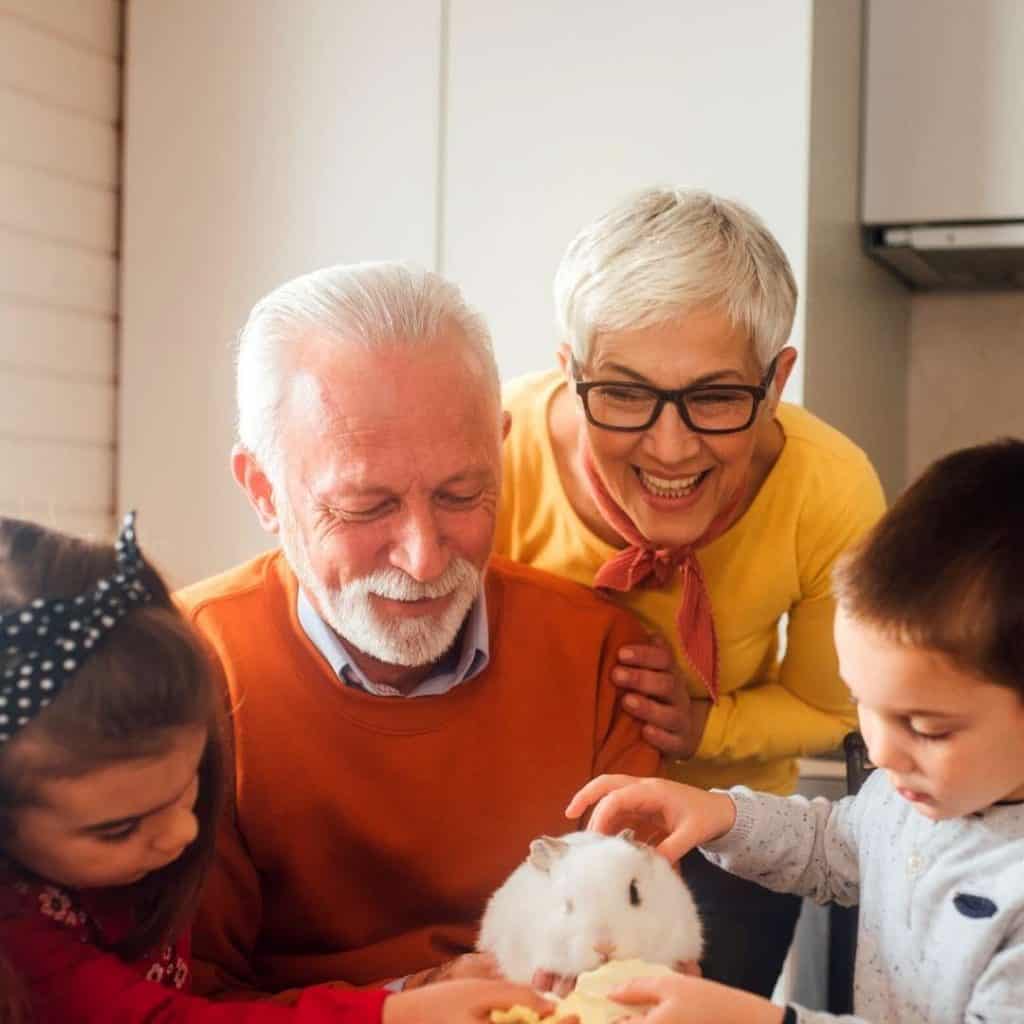
12. Fosters Family Bonds
Not only does having a pet rabbit teach kids the concept of responsibility and kindness, but it also helps foster a strong family bond.
Once you adopt or purchase a pet rabbit for your children, it ultimately becomes a part of the family. While your child should be the main caregiver of their pet rabbit, it takes a family to raise well-behaved and well-adjusted pets…and children.
The time you spend teaching your child how to care for their first pet rabbit, combined with the time that your kid will spend teaching you all about pet rabbits will be the foundation of memories to last you both a lifetime.
Time spent with a pet rabbit is time not spent on a screen.
13. Encourages A Healthy Lifestyle
Pet rabbits, like all pets, require attention and exercise.
Rabbits do not thrive or live comfortably when they are cooped up in a cage alone all day long. A rabbit who has been left alone for days will become a lonely and sad rabbit.
This means that your rabbit-owning child is going to be responsible for spending time with their rabbit and playing with them. Every minute spent crawling around on the floor playing with a pet rabbit is one less minute setting on the couch with a screen in their hands.
That’s a healthier lifestyle.
14. Rabbits Can Be Litter Trained
With a little effort, you can litter train a rabbit much like a cat which makes keeping a rabbit as a pet much easier!
15. Messes Are More Contained
Since pet rabbits are seldom given free access to the whole house, their messes are much more contained than the messes of cats or dogs who normally roam the whole house most of the time.
If your bunny spends 50% of its time in a rabbit hutch, then over 50% of the mess will be in the hutch. It’s likely that they’ll spend the other part of their day in a rabbit safe room in your home, so the remainder of their mess will be limited to that area.
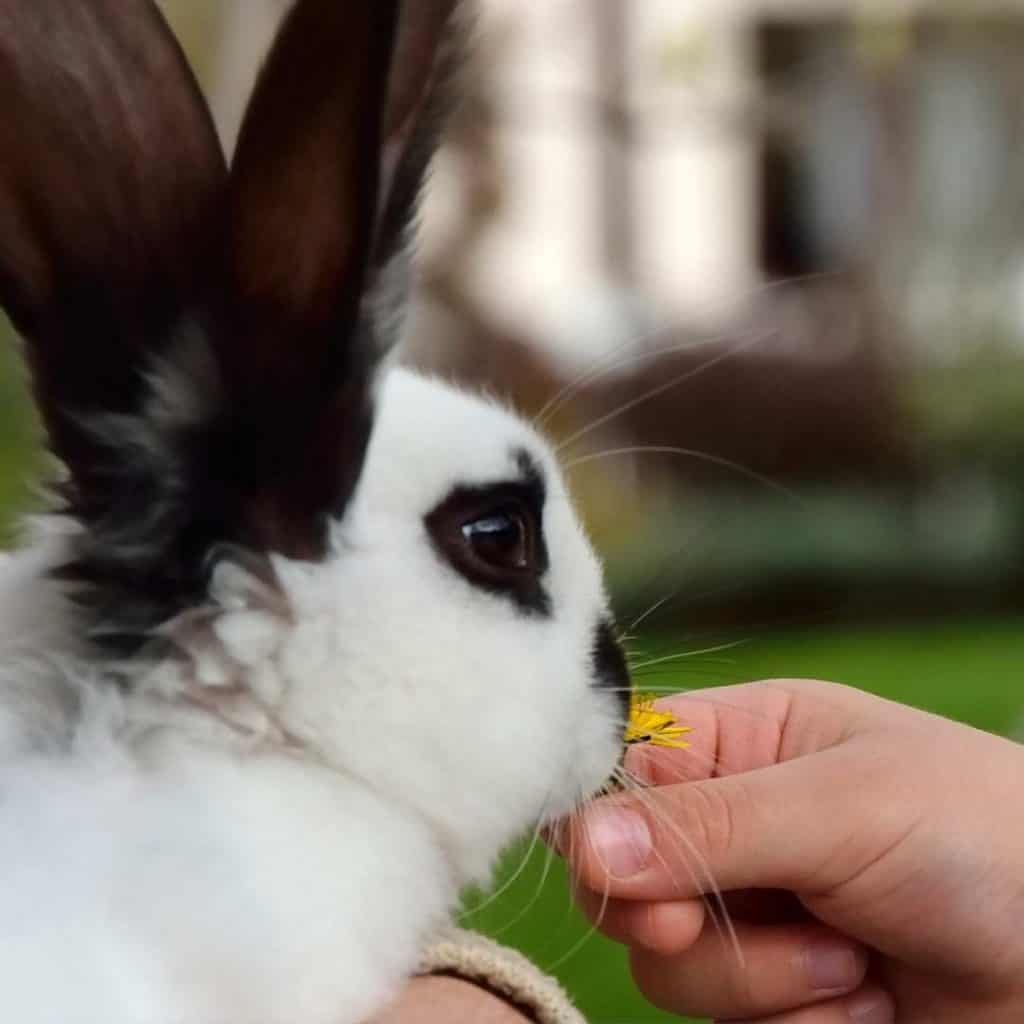
13 Reasons That Rabbits Are Bad Pets For Kids
Of course, there are also disadvantages to a child getting a rabbit as a pet. It would be irresponsible for me to not share those disadvantages. Likewise, it would be irresponsible for you to not carefully consider the disadvantages of a pet rabbit for children before you commit to a rabbit.
Too many pets, including pet rabbits, are given up for adoption or simply abandoned in the wild where a domestic rabbit will almost certainly die.
1. Rabbit Litter Boxes Need Regular Cleaning
While it’s great that rabbits can be litter box trained much just as pet cats can be litter box trained, their litter box can stink much like a cats litter box.
Most people clean their rabbit’s litter box either daily or every other day.
2. Litter Box Takes Special Material
You cannot use the same clay litter box material for a rabbit that you use for a cat. If a rabbit were to eat that clay litter, it has the potential of clogging up its digestive system and causing severe health issues.
Instead, you need to use either paper or wood pellets for a rabbit’s litter box. You can see the rabbit litter we recommend on Amazon by clicking here.
3. Rabbits Have Accidents
While rabbits can be litter box trained a lot like cats, most rabbits are going to have more accidents than most cats and this is perfectly natural and should be expected.
First, rabbits go to the bathroom while they sleep. In doing so, they pass a semi-digested pellet called cecotropes which they will eat in the morning to give it a second chance to be fully digested. Sure, it’s a little gross but natural and healthy for a bunny.
Second, rabbits tend to poop when they are eating, which is why most people put their rabbit’s feeder and hay rack above their litter box.
Finally, rabbits are live-in-the-moment kind of beings and if they are outside of their cage playing they will occasionally have an accident. You can reduce the chances of this happening by having a second litter box outside of their rabbit hutch and near their play area.
On the plus size, a bunny accident isn’t a big mess, and with a paper towel and a spray bottle of cleaner it’s gone in just a moment.
4. Rabbits Shed Hair
Some rabbit breeders are going to tell you that one breed or another doesn’t shed. This is not true.
All rabbits shed, though some rabbit breeds shed less than others. At the very least, short hair rabbits don’t make as much of a mess when they shed as longer hair rabbits like Angoras.
5. Rabbits Need Brushing
Keep in mind that all animals with fur shed, including dogs and cats. And just like with dogs and cats, if you brush your rabbit regularly, you’re not going to notice the shedding as much. This becomes more important with longer-haired rabbits.
Brushing your rabbit regularly reduces shedding, eliminates potential tangles, and helps you form a strong bond with your pet bunny.
6. Rabbit Hutches Need Cleaning
Knowing that your rabbit is going to go to the bathroom when they sleep and eat and that they will shed fur, it should come as no surprise that you’re going to have to clean their hutch at least once a week.
Honestly, it’s easier to just do spot cleaning when you see a clump of hair or poop pellets and then just do a deep cleaning once a month.
7. Rabbits Are Not Hypoallergenic
Like all pets with hair, rabbits can trigger allergies in some people. If your child or someone else in your family has allergy problems with pet dander, I strongly suggest that you spend some time at the local rabbit rescue, rabbit breeder, or pet store playing with a rabbit before you bring one home.
The last thing you want to happen is to find yourself being forced to give your child’s pet rabbit up for adoption because of an allergic reaction.
8. Rabbits Require Excercise
Sure, rabbits don’t require the same kind of exercise that a dog or cat requires, but they do need daily exercise to thrive both physically and mentally.
A tired rabbit is a good rabbit…the same is true of dogs, cats, and children.
~Stacey
Without exercise, a rabbit will become lazy and fat or even start exhibiting unwanted behaviors such as chewing on everything in reach.
Rabbit exercise doesn’t include going for a run, or even going for a walk in the park (though some people do put a rabbit leash on their bunny and go for a walk).
9. Requires High-Quality Food
Rabbits have very sensitive digestive systems and if they eat something that’s not good for them it has to pass all the way through that digestive system because rabbits can not puke. You need to not only make sure that you’re feeding them a healthy rabbit diet, you must also assure that your rabbit’s diet is made up of high-quality foods.
This means that you start with a high brand of rabbit hay and pellets that are fresh and clean. Then you need to keep that rabbit feed clean and free of impurities until consumed by your bunny.
If you’re not sure what to feed your rabbit, read this article about the best rabbit diet right here on Rabbit Pros.
P.S. If you want to see what brands of rabbit feed we feed our bunnies, be sure to swing over to our recommended rabbit gear pages.
10. Pet Rabbits Can Be Costly
Getting your first pet rabbit isn’t inexpensive. Rabbit Pros did a study and found that the average cost to get your first pet rabbit is $306, but that cost can range widely depending on the choices you make regarding rabbit-related gear.
The majority of this cost is tied up in the rabbit hutch. Setting up an indoor rabbit hutch can easily cost north of $200.
Now keep in mind that there are costs associated with any pet, but those that don’t require an enclosure are going to cost less…unless your new dog eats your shoes or your new cat sharpens it’s claws on your couch.
11. Rabbit Are Fragile
While the average-sized rabbit is about the size of an average cat, a rabbit is more fragile than a cat. Not only do rabbits lack the magical “always lands on their feet” skill of cats, but their bones are also more fragile.
Rabbits can be seriously injured in accidents including falls, being stepped on or sit on, or even being smashed behind a door.
12. Rabbits Can Bite, Scratch, Or Kick
Even though rabbits are the most adorable pets, you need to know that they do have teeth, claws, and powerful back legs to protect themselves.
When a bunny feels threatened, it will either flee, hide, or if given no other option, they will fight by biting, scratching, or kicking.
And while a scared rabbit can hurt you, for the most part, the damage they can do to a human is pretty limited and infection of a shallow open wound is about the worst you have to fear.
If you want to learn more about how dangerous rabbits are, start with this article about the dangers of rabbit scratches.
13. Rabbits Are Prey Animals
Unlike dogs or cats, rabbits are not preditors. Instead, they are prey animals that are hunted by every meat-eating animal in their environment.
Because rabbits are prey animals, they are by nature very cautious in new situations as they scan the area for dangers. This means that it will probably take longer for a new rabbit to get used to its new owners and their new home.
When you get a new pet rabbit, give them space and time to get comfortable in their new home and learn it is safe, then introduce yourself as a trusted friend that they need not fear.
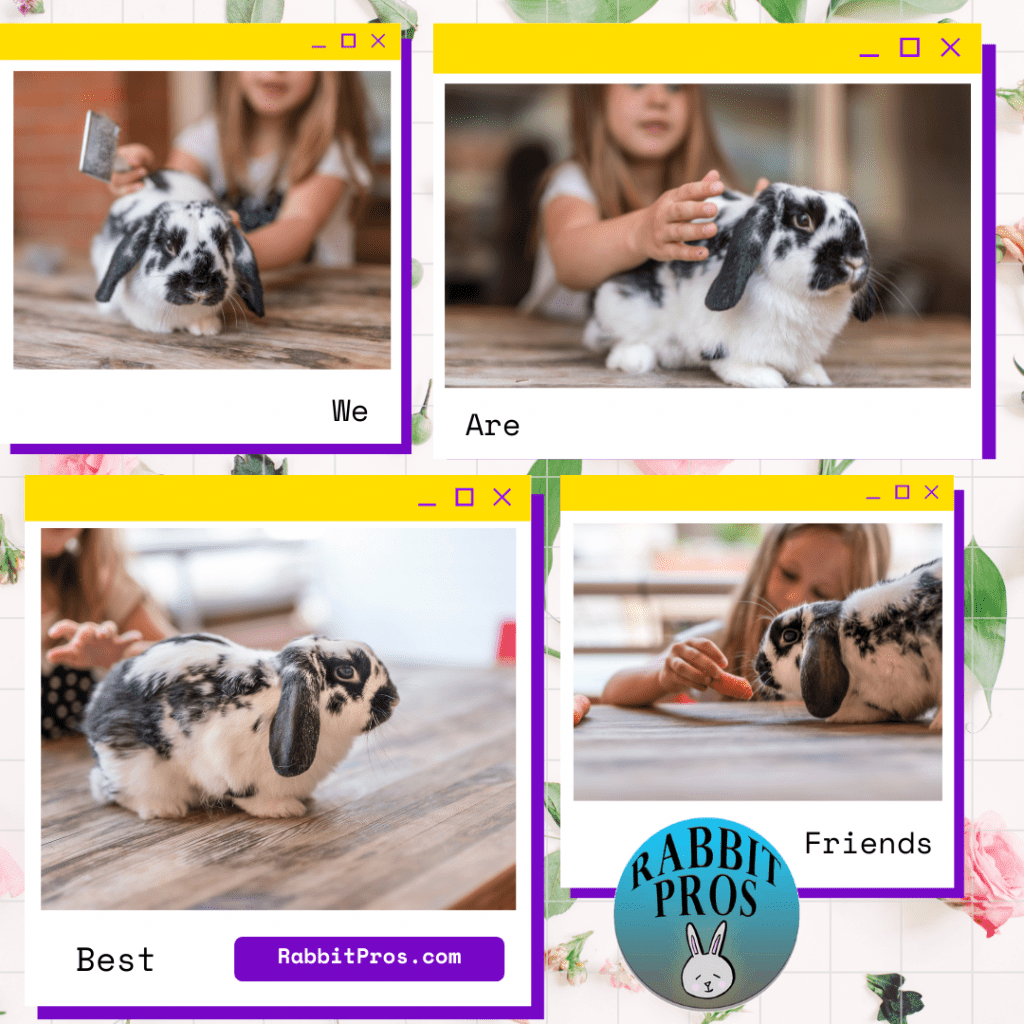
Are Rabbits Good Pets For Children?
Rabbits make great pets for small children because of their size and gentle nature. Because they normally live in an indoor rabbit hutch or dedicated rabbit room, children can have easy access to their pets which helps them bond and learn.
Rabbits are better pets than other small cuddly animals like hamsters, mice, rats, and guinea pigs because they live longer so you’re not going to be dealing with the idea and reality of death with your young children.
It’s just important that are aware of the pros and cons of owning a pet rabbit before you make the commitment to your kid (or to a bunny) to bring a rabbit into your life.
~Stacey
P.S. Before you choose a pet bunny for your kid, read this article about the best rabbit breeds as pets for kids.
